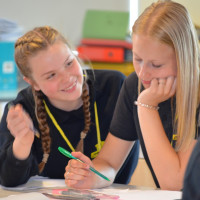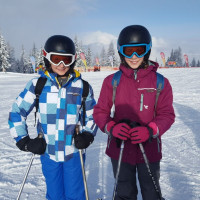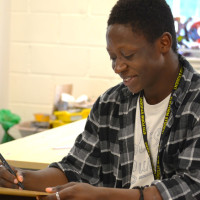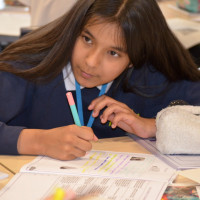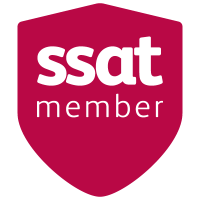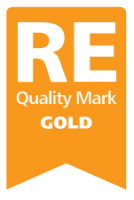22nd February 2022
SSAT - Student Leadership Accreditation
Year 8 Student Leadership Accreditation
Since November 2021, Year 8 students have been working on their Student leadership Accreditation, (SSAT) This is a formal way to champion and celebrate the leadership skills of our students in and out of school. It requires them to create a portfolio in which they gather and upload evidence to showcase their skills.
Year 8 students know all about this accreditation and work towards it during tutor time twice a week. They can also work on it at home.
This page should provide you with everything you need but if not, please contact Mrs Dobson (Head of Year 7) at becndd@beckfoot.org or Mr Khan (Year 7 Pastoral Manager) becmuk@beckfoot.org for more information.
Step-by-Step guide for students
Welcome from SSAT
Congratulations on taking the first steps to gaining SSAT’s Student Leadership Accreditation (SLA). SSAT is a member organisation which represents the views of thousands of school leaders, teachers and students like yourself. SSAT hopes to transform schooling through inquiry, inspiration, innovation and having an impact; the SLA recognises the role that students can play in this process. Within this guide you will find:
- Step-by-step instructions on how to complete your SLA
- Student Leadership Accreditation criteria – Guide to the principles of the award
- Student Leadership Accreditation – Portfolio cover sheet
- Student Leadership Accreditation – My supporting statement
What do we mean by leadership?
Leadership means a lot of different things to a lot of different people. You might want to start by researching different views on leadership with your fellow students or teacher. This award recognises all sorts of different leadership activities, some of which you may well already have done or be doing. You might be on the school council, write for the school blog, be captain of a sports team, be doing your Duke of Edinburgh award . . . it really doesn’t matter as long as you are displaying the skills listed on the criteria grid.
Step 1 – Reflecting on where you are
To begin with, you’ll need the Guide to the principles of the award grid. We suggest that you take time on your own to think about each of the ten strands listed in the grid, read the criteria, and decide which level you are currently at. You should record your decisions on the SLA Portfolio Cover Sheet.
This should not be a snap decision; you should really reflect carefully on what you are doing and where you fit best on the grid. After reflecting on your own, we suggest you talk about your decisions with another student, a teacher or other adult and see whether they agree. Are you able to give concrete examples to back up where you put yourself?
Are you selling yourself short – maybe you’re leading more than you realise? When you have discussed this, make a note of where you are in each of the strands.
Step 2 – Collecting evidence and writing supporting statements
In order to gain an award, you will need to provide evidence for each of the ten strands. This could be evidence from things you have already done, are doing or you might need to plan some activities to make sure you have all the evidence you need. We suggest that you collect this evidence together in a portfolio (folder) – with at least one piece of evidence for each strand. The 2016 evidence could be anything: screenshots from the web, letters or emails, photos, stills from videos, certificates, meeting agendas or minutes, PowerPoint slides, etc.
For each of the ten strands, you will also need to write a supporting statement on your My supporting statement form. This statement should explain how the piece of evidence you’ve submitted shows that you are displaying the skills from the Guide to the principles grid. You may ask your teacher for help on this – but you must write the statement yourself. Remember, this doesn’t have to be done at once – it might take you a term or a year to collect the evidence.
All of your evidence, supporting statements and criteria grid must be collected together. There is no set-way that you should organise this, but you should think carefully about how to make it simple to see where you are, and what your evidence for this is. This will be a great resource to take to interviews for jobs, college and universities in the future.
* To get any level of the award, you must reach that level (or higher) in all of the ten strands. For example, if a student reached silver in nine strands but had bronze in one, they would only qualify for a bronze award.
Step 3 – Peer Moderation
At some point in the year, your teacher will arrange a moderation session. Your portfolio will be given to another student to review, and you will receive someone else’s to moderate. When moderating their portfolio you should ask yourself two questions:
- Does the work they are doing reflect the skills needed for that level? Please use the Student Leadership Award criteria – Guide to the principles of the award.
- Does the evidence they provided, along with their supporting statement, explain this clearly enough? If you agree with their self-reflection and evidence, you should sign your name in the appropriate box on the Portfolio Cover Sheet.
If you feel they are not showing the skills well enough, you, should have a discussion with them and your teacher about where they are and reach an agreement. Your teacher will then collect in the portfolios, and send your name to us, so that we can moderate and accredit you with the appropriate award. Good luck – we look forward to accrediting you!



